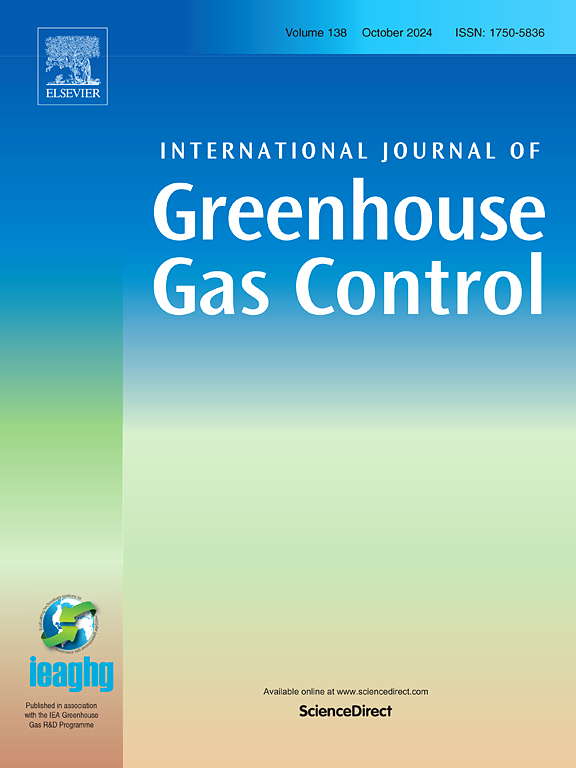基于产量的碳排放交易体系和补贴对中国燃煤电厂CCS改造的影响
IF 5.2
3区 工程技术
Q2 ENERGY & FUELS
International Journal of Greenhouse Gas Control
Pub Date : 2025-07-13
DOI:10.1016/j.ijggc.2025.104431
引用次数: 0
摘要
碳捕集与封存技术(CCS)被认为是碳密集型产业(如燃煤电厂)减少碳排放的关键技术。然而,高昂的投资成本和不明确的政策支持使得CCS的部署与中国的气候减缓目标相去甚远。本研究采用电力平准化成本(LCOE)方法对cfpp进行CCS改造的全生命周期发电成本进行评估,该方法不仅考虑了财政激励(如初始投资补贴和碳税补贴),还考虑了非财政激励(如碳排放配额)。具体而言,我们设计了四种基准收紧情景,以探讨基于产出的排放交易体系(ETS)和政府补贴对CCS改造的影响。结果表明:(1)没有配额交易的CCS改造对cfp的碳减排吸引力较小,初始投资补贴不足以刺激CCS改造。(2)如果配额基准保持754 g/kWh不变,当关键碳税补贴达到388元/t时,cfp可以从CCS改造中获利。随着配额基准收紧,碳税补贴必须提高,以维持碳排放交易体系下的碳平衡。(3)当配额基准收紧更严格时,cfpp只有在配额价格更高的情况下才能盈利。本文章由计算机程序翻译,如有差异,请以英文原文为准。
Impacts of output-based ETS and subsidies on CCS retrofitting in China’s coal-fired power plants
Carbon capture and storage (CCS) has been considered as a pivotal technology to reduce carbon emissions in carbon-intensive industries, such as coal-fired power plants (CFPPs). Nevertheless, high investment cost and unclear policy support make the CCS deployment far from the climate mitigation goals in China. This study employs the levelized cost of electricity (LCOE) approach to evaluate the life cycle cost of electricity generation for CFPPs with CCS retrofitting, which considers not only the financial incentives (i.e., the initial investment subsidy and carbon tax subsidy), but the non-financial incentives (such as the carbon emission quota). Specifically, we design four benchmark tightening scenarios to explore the impacts of output-based emission trading system (ETS) and government subsidies on CCS retrofitting. The results are as follows: (1) The CCS retrofitting without quota trading is less attractive for CFPPs to deliver the carbon emissions reduction, in that the initial investment subsidy is not enough to stimulate the CCS retrofitting. (2) If the quota benchmark remains 754 g/kWh unchanged, the CFPPs can turn a profit from CCS retrofitting when the critical carbon tax subsidy reaches 388 CNY/t. As the quota benchmarks are tightened, the carbon tax subsidy must rise to maintain the carbon balance under the ETS. (3) When the quota benchmarks are tightened more stringently, the CFPPs can make a profit only if the quota price gets more higher.
求助全文
通过发布文献求助,成功后即可免费获取论文全文。
去求助
来源期刊
CiteScore
9.20
自引率
10.30%
发文量
199
审稿时长
4.8 months
期刊介绍:
The International Journal of Greenhouse Gas Control is a peer reviewed journal focusing on scientific and engineering developments in greenhouse gas control through capture and storage at large stationary emitters in the power sector and in other major resource, manufacturing and production industries. The Journal covers all greenhouse gas emissions within the power and industrial sectors, and comprises both technical and non-technical related literature in one volume. Original research, review and comments papers are included.

 求助内容:
求助内容: 应助结果提醒方式:
应助结果提醒方式:


